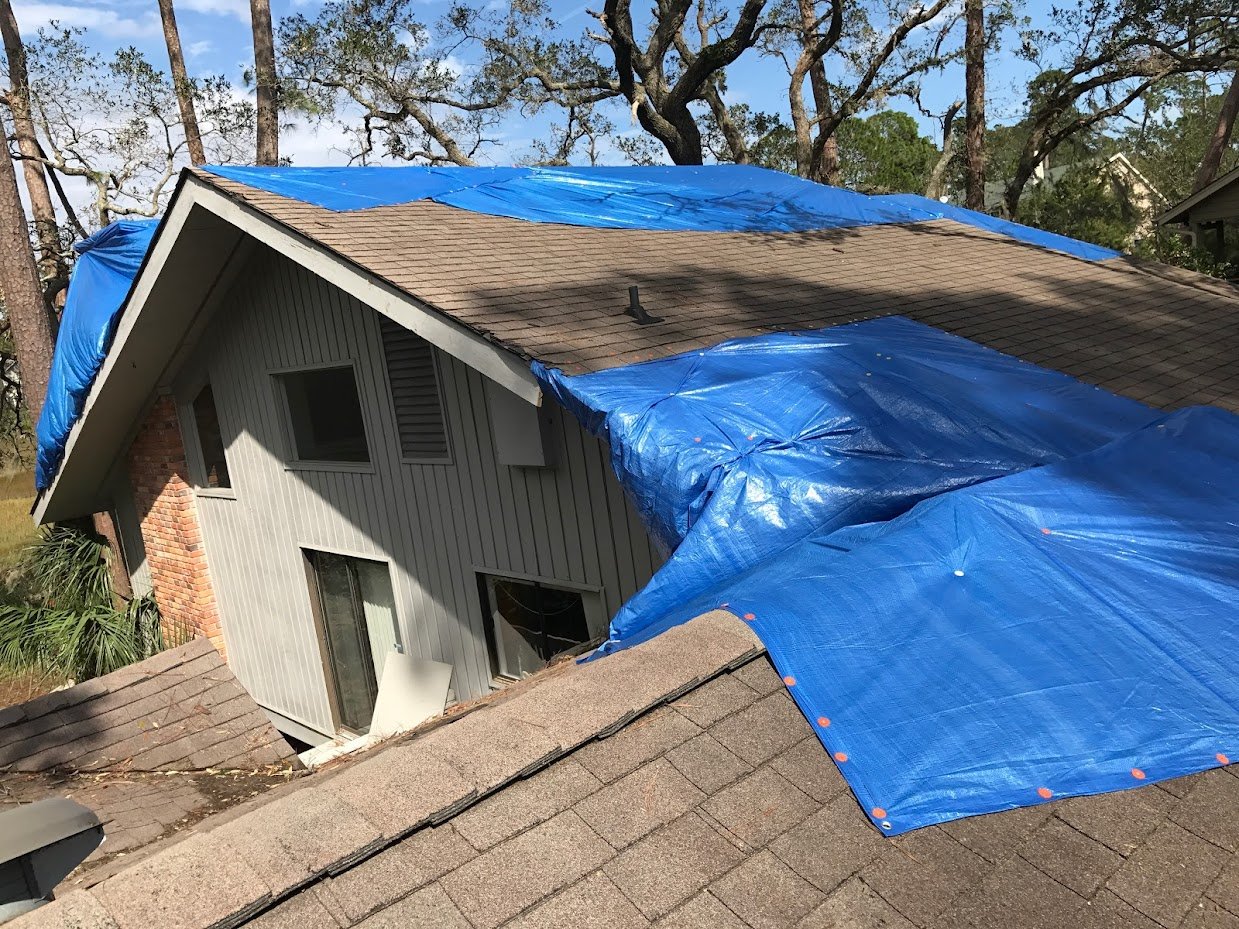
Image Source: Google
When a roof becomes damaged in a storm or natural disaster, your home is at risk of being exposed to the elements. To prevent further damage and protect your property, installing a roof tarp is essential. This guide will walk you through the steps of roof tarp installation and help you safeguard your home from rain, wind, and other external elements.
The first step in roof tarp installation is to assess the damage to your roof. Before climbing up to the roof, make sure to inspect it from the ground to identify any visible signs of damage such as missing shingles, leaks, or holes. If the damage is extensive or if you are not comfortable with heights, it's best to hire a professional roofer to assess the situation and help with the tarp installation.
Once you have assessed the damage and determined that a roof tarp is necessary, you will need to gather the necessary materials and tools for the job. This includes a heavy-duty tarp, nails, a hammer, a ladder, and safety gear such as gloves and goggles. It is important to choose a tarp that is large enough to cover the damaged area of the roof and is made of durable, weather-resistant material such as polyethylene.
Before climbing onto the roof, make sure to take all necessary safety precautions. This includes using a sturdy ladder, wearing non-slip shoes, and securing the ladder to prevent falls. Once on the roof, carefully position the tarp over the damaged area, making sure to leave a generous overhang on all sides to ensure full coverage. Use nails to secure the tarp in place, starting from the edges and working your way towards the center.
When nailing the tarp to the roof, make sure to space the nails evenly and drive them in securely to prevent the tarp from coming loose in strong winds. Be careful not to hammer the nails too close to the edges of the tarp, as this could cause tears and compromise the integrity of the covering. If the damaged area is near a chimney or other protrusions, cut the tarp to fit around them and secure the edges with additional nails for a tight seal.
In addition to installing a roof tarp, there are other steps you can take to protect your home from the elements. Regularly inspect your roof for signs of damage such as missing shingles, leaks, or sagging areas, and make repairs as needed. Trim overhanging branches that could fall onto the roof during a storm and remove any debris such as leaves or twigs that could clog gutters and cause water damage.
By following the essential guide to roof tarp installation and taking proactive steps to protect your home from the elements, you can help prevent further damage and costly repairs. Remember to always prioritize safety when working on your roof and consult with a professional roofer if you are unsure about the extent of the damage or the best course of action.
